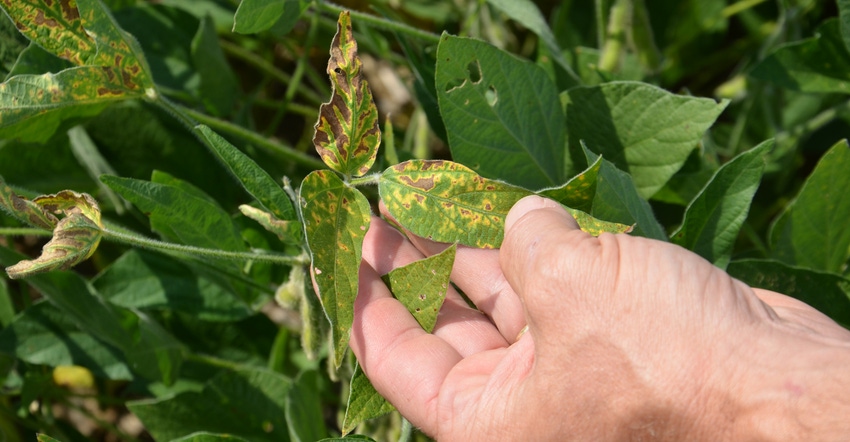November 3, 2021

Sudden death syndrome was a problem in 2021. A few fields that should go to soybeans in ’22 in our corn-soy rotation had some SDS in ’20. Should we break rotation and go to corn? What else could we do instead?
The Indiana certified crop adviser panel answering this question includes Steve Gauck, a regional agronomy manager for Beck’s, Greensburg; Jeff Nagel, agronomist with Ceres Solutions, Lafayette; and Dan Ritter, agronomist with Dairyland Seed, Rensselaer.
Gauck: If SDS pressure in 2021 was severe and caused a huge yield loss, staying with corn would be a possibility. If pressure was moderate to low, there are management practices you can put in place to help lower your risk of yield loss.
SDS infection happens early in the season, with symptoms showing up late. Soybeans that struggle early in wet, cool conditions are at the most risk. Planting your fields with a history of SDS later in the season will minimize odds for slow growth due to cold soils. Many soybean varieties now have an SDS rating. Choosing the highest-yield varieties for your soils with the best SDS tolerance rating will gain yields. There are now also seed treatment options for suppression of SDS. For fields with SDS history or if you’re planting early, seed treatments offer a lot of protection against SDS infection. There is no silver bullet for SDS control, but many of these practices will help limit yield losses.
Nagel: Stay with your rotation. The fungus that causes SDS, Fusarium virguliforme, can survive in the soil for several years. Once SDS is present in a field, our best strategy is to implement practices that help mitigate the impact. Like all diseases, a combination of the host crop susceptibility, amount of disease inoculum present in the field, and growing conditions will impact severity.
What are practical suggestions that should be considered to mitigate SDS impact?
Try to select high-yield potential varieties that have better SDS tolerance and soybean cyst nematode ratings. You can still have SDS without SCN pressure, but often it is more prevalent with SCN.
Avoid planting into cool and wetter soils. SDS is a root rot, and the primary infection occurs in the seedling stage when plants are growing slowly.
If a field has a history of SDS, use Ilevo or Saltro seed treatments. These two fungicides have shown good activity on reducing SDS pressure and provide some help on SCN.
You can still have SDS even when implementing the above practices, but the goal is to minimize the yield impact.
Ritter: As with any disease, it is important to watch field history and keep track of pest and production concerns. Sudden death syndrome severity varies from year to year based on environmental conditions. Using several risk-mitigating factors, I feel you could stick with your rotation. These won’t eliminate the risk of SDS but decrease the odds of it having a significant economic impact.
One that can help with the whole cropping system is good drainage. Good drainage can reduce soil compaction, which lowers incidence of SDS. Simply reducing soil compaction may also help. Plant that field later in your schedule, as early planting favors SDS. Consider a seed treatment that targets SDS, and choose seed varieties with above-average scores for SDS tolerance.
You May Also Like




